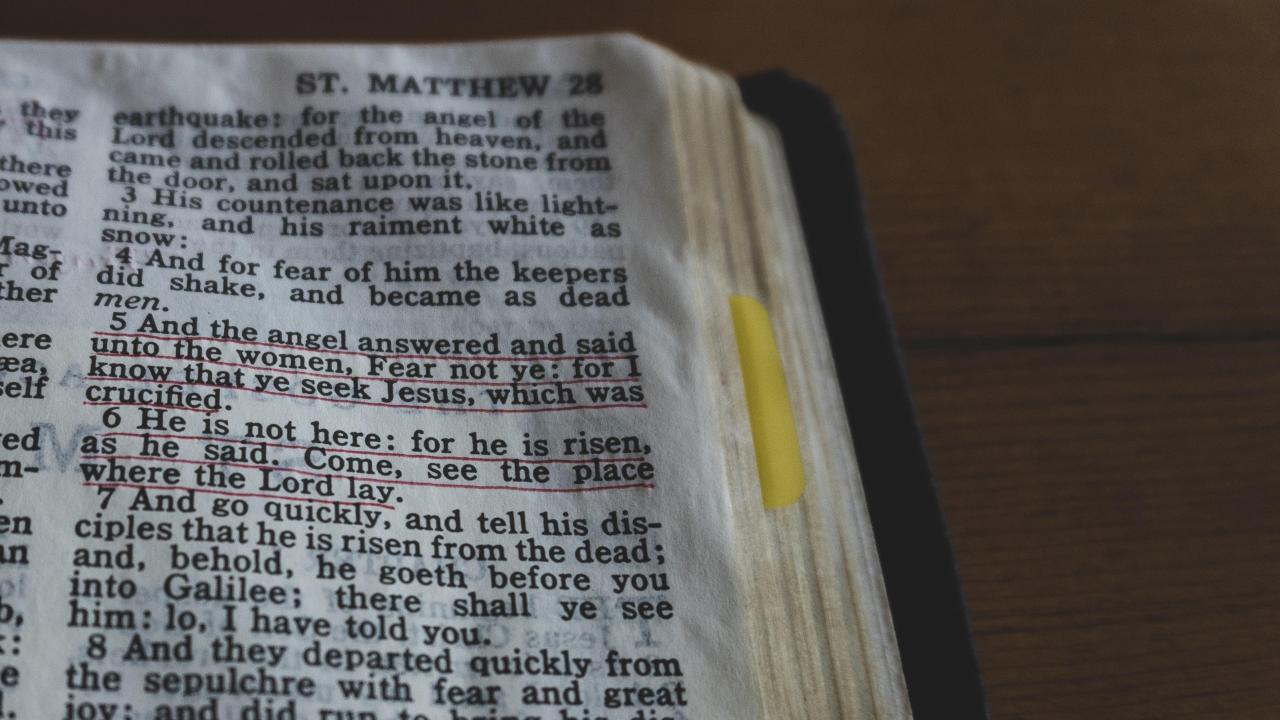Where Hal Lindsey and Dispensationalism Went Wrong


Hal Lindsey’s book
The Late Great Planet Earth
Hal Lindsey’s book The Late Great Planet Earth, first edition in 1970, sold over 40 million copies. Gullible Christians got sucked into Lindsey’s soon-end-of-the-world cult-like poppycock. As time has passed without his version of Armageddon taking place, we can now objectively analyze where Lindsey went wrong:
- Lindsey (p. 54, 181), like other dispensationalists, placed the beginning of the end with Israel becoming a nation in 1948. He thought all prophecy would be fulfilled within a 40-year generation (Matthew 24:34). But 1988 came and went, proving him to be a false prophet. (This should be adequate proof that 1948 has nothing to do with Bible prophecy.)
- Lindsey (p. 44) prophesied a 7-year, world-wide, tribulation. He got this from Revelation 11 which speaks of the “holy city” being trampled for 42 months — and “two witnesses prophesying” for 1,260 days. He simply adds both of these 3 ½-year periods together to get 7 years (of tribulation). There is NO indication in the text that this is a valid interpretation. He was reading something speculative into the text that is not there. Indeed, there is no passage in the Bible that clearly teaches a 7-year tribulation. Further, Jesus limited the time of the trampling of Jerusalem to his own generation (Luke 21:20–22, 32). Interestingly, the final assault on Jerusalem by the Roman army under Titus lasted 42 months from February AD 67 to August AD 70. This is strong supporting evidence for the Great Tribulation being fulfilled at the Jewish-Roman War ending with the fall of Jerusalem in AD 70.)
- Lindsey (p. 87, etc.) saw the existence of nuclear weapons as an important sign of the end times. However, Jesus taught that the so-called “end times” would be when God’s people would “fall by the edge of the sword” (Luke 21:24). Jesus’ prophecies were about ancient warfare, not modern nuclear weapons. The context of this prophecy by Jesus was about the coming destruction of the temple (Luke 21:6). Jesus told his listeners that it would happen when THEY saw Jerusalem surrounded by armies (Luke 21:20), in THEIR generation (Luke 21:32). This all happened when the Roman armies invaded Jerusalem in AD 67–70.
- Lindsey (p. 56–57) said, “It is certain that the Temple will be rebuilt. Prophecy demands it.” Problem is, not a single verse of the Bible can be mustered to support a future rebuilding of the temple. This idea is merely an invention of dispensationalists to try to justify their theory.
- Lindsey (p. 88, 124) even makes this astounding prediction: “The prophetic Scriptures tell us that the Roman Empire will be revived shortly before the return of Christ to this earth. A new Caesar will head this empire.” It’s hard to believe anyone took this charlatan Lindsey seriously.
- Lindsey (p. 108), in speaking of the Antichrist, “He will have a magnetic personality, be personally attractive, and a powerful speaker. He will be able to mesmerize an audience with his oratory.” But the Antichrist is never mentioned in Revelation, let alone any such description of him. The Antichrist is only mentioned in John’s epistles, which say that the Antichrist was already in the world when John was writing (1 John 4:3). Indeed, John taught that it was already the “last hour” as he wrote (1 John 2:18). If you believe John was an inspired writer, this precludes any future fulfillment.
- Lindsey (p. 125, 126) said that modern drug addiction and witchcraft is evidence of the “sorceries” of Revelation 9:21. He quoted a TV station that “Nearly every respectable high school these days has its own witch.” (Besides the obvious problem of nonsense, Revelation itself teaches that it is about things that MUST SHORTLY TAKE PLACE (Revelation 1:1; 22:6). Indeed, there are over 30 passages in Revelation that reiterate that its fulfillment was “near,” “soon,” or “about to happen.”
- Lindsey said that we should take the Bible literally (p. 176). Obviously, he doesn’t take the over 100 imminence statements literally — that biblical prophecy would be fulfilled SOON, AT HAND, BEFORE SOME IN THE FIRST CENTURY HAD DIED, IN THEIR GENERATION, etc. (Matthew 10:23; 16:27–28; 24:34; Luke 21:22; Acts 2:14–20; Hebrews 1:2; 10:37; 1 Peter 4:7, 17; etc., etc.)
- Lindsey (p. 133) said that the Harlot Babylon is some future one-world religious system “clothed in purple and scarlet.” But, Revelation itself teaches that Babylon is “the great city” (Revelation 18:10) upon whom wrath was to come. The Great City Babylon is clearly identified as Jerusalem (Revelation 11:8)! Further, purple and scarlet are the colors of the ritual dress of the high priest (Exodus 28:5–6; 39:1–2). So, the evidence supports the view that Revelation is about God’s judgment on Old Covenant Israel.
- Lindsey thought that Revelation was written in 95 AD. But there are some two dozen clues within Revelation that it was written prior to AD 70. Revelation refers to events that match the historical record of the Jewish-Roman War of AD 66–70. The book was written DURING the “tribulation” per Revelation 1:9, apparently while the temple was still standing per Revelation 11:1, and during the reign of the sixth emperor of Rome per Revelation 17:10 — that is, Nero who died in AD 68. Over 130 scholars have been identified as holding to the pre-AD 70 date of Revelation.
- Lindsey (p. 164) thought the Day of the Lord predicted in the book of Joel is in our future. But the inspired apostle Peter taught that Joel’s prediction was being fulfilled in his own day (Acts 2:14–20).
- Lindsey (p. 179) taught that the “elements” of 2 Peter 3 that would be destroyed refer to the “most basic element of nature” — thus the physical universe. But EVERY TIME in the New Testament that the word “elements” (Greek, stoicheion) is used, it refers to the elements of the old covenant (Galatians 4:3, 9; Colossians 2:8, 20–22; Hebrews 5:12–13). So, what was to be destroyed? — the old covenant, not the physical universe (Hebrews 8:13).
- Lindsey (p. 180, 181) references Daniel 12 as predicting the end of the world. But Daniel 12 itself says that the “TIME OF THE END” would be when the power of the holy people would be shattered and the daily sacrifices for sin taken away. That clearly happened in AD 70 with the fall of Jerusalem and destruction of the temple. Daniel 12 could not be clearer.
- Lindsey (p. 176) taught, as do all premillennialists, that Christ will establish a literal, physical kingdom on earth. But Jesus said that his kingdom is “not of this world” (Luke 17:20–21; John 18:36).
I could go on. I cannot judge Mr. Lindsey personally, only what he wrote. But this is enough to demonstrate that Hal Lindsey was a deceiver and a false prophet. Lindsey was reported to be worth $42 million, which is, apparently, after his first three wives got their share. (Some say his net worth was reduced to $1–5 million.) He was married to his fourth wife. Hal Lindsey not only separated millions of people from their money for his own gain, he made a mockery of Christianity. Many people altered their lives for his false prophecies. Such is the influence of problematic eschatology of Lindsey and other dispensationalists
Dispensationalism was founded in 1830 by John Nelson Darby. It died in 1988 when its prophecies failed to materialize in “that generation.” Rest in peace.
Leave a comment Like Back to Top Seen 501 times Liked 1 times
Enjoying this content?
Support my work by becoming a patron on Patreon!
By joining, you help fund the time, research, and effort that goes into creating this content — and you’ll also get access to exclusive perks and updates.
Even a small amount per month makes a real difference. Thank you for your support!
Subscribe to Updates
If you enjoyed this, why not subscribe to free email updates and join over 859 subscribers today!
My new book is out now! Order today wherever you get books
Recent Posts
Luke J. Wilson | 08th July 2025 | Islam
“We all worship the same God”. Table of Contents 1) Where YHWH and Allah Appear Similar 2) Where Allah’s Character Contradicts YHWH’s Goodness 3) Where Their Revelations Directly Contradict Each Other 4) YHWH’s Love for the Nations vs. Allah’s Commands to Subjugate 5) Can God Be Seen? What the Bible and Qur’an Say 6) Salvation by Grace vs. Salvation by Works Conclusion: Same God? Or Different Revelations? You’ve heard it from politicians, celebrities, and even some pastors. It’s become something of a modern mantra, trying to shoehorn acceptance of other beliefs and blend all religions into one, especially the Abrahamic ones. But what if the Bible and Qur’an tell different stories? Let’s see what their own words reveal so you can judge for yourself. This Tweet recently caused a stir on social media 1) Where YHWH and Allah Appear Similar Many point out that Jews, Christians, and Muslims share a belief in one eternal Creator God. That’s true — up to a point. Both the Bible and Qur’an describe God as powerful, all-knowing, merciful, and more. Here’s a list comparing some of the common shared attributes between YHWH and Allah, with direct citations from both Scriptures: 26 Shared Attributes of YHWH and Allah According to the Bible (NRSV) and the Qur’an Eternal YHWH: “From everlasting to everlasting you are God.” — Psalm 90:2 Allah: “He is the First and the Last…” — Surah 57:3 Creator YHWH: “In the beginning God created the heavens and the earth.” — Genesis 1:1 Allah: “The Originator of the heavens and the earth…” — Surah 2:117 Omnipotent (All-Powerful) YHWH: “Nothing is too hard for you.” — Jeremiah 32:17 Allah: “Allah is over all things competent.” — Surah 2:20 Omniscient (All-Knowing) YHWH: “Even before a word is on my tongue, O LORD, you know it.” — Psalm 139:4 Allah: “He knows what is on the land and in the sea…” — Surah 6:59 Omnipresent (Present Everywhere) YHWH: “Where can I go from your Spirit?” — Psalm 139:7–10 Allah: “He is with you wherever you are.” — Surah 57:4 Holy YHWH: “Holy, holy, holy is the LORD of hosts.” — Isaiah 6:3 Allah: “The Holy One (Al-Quddus).” — Surah 59:23 Just YHWH: “A God of faithfulness and without injustice.” — Deuteronomy 32:4 Allah: “Is not Allah the most just of judges?” — Surah 95:8 Merciful YHWH: “The LORD, merciful and gracious…” — Exodus 34:6 Allah: “The Most Gracious, the Most Merciful.” — Surah 1:1 Compassionate YHWH: “As a father has compassion on his children…” — Psalm 103:13 Allah: “He is the Forgiving, the Affectionate.” — Surah 85:14 Faithful YHWH: “Great is your faithfulness.” — Lamentations 3:22–23 Allah: “Indeed, the promise of Allah is truth.” — Surah 30:60 Unchanging YHWH: “For I the LORD do not change.” — Malachi 3:6 Allah: “None can change His words.” — Surah 6:115 Sovereign YHWH: “The LORD has established his throne in the heavens…” — Psalm 103:19 Allah: “Blessed is He in whose hand is dominion…” — Surah 67:1 Loving YHWH: “God is love.” — 1 John 4:8 Allah: “Indeed, my Lord is Merciful and Affectionate (Al-Wadud).” — Surah 11:90 Forgiving YHWH: “I will not remember your sins.” — Isaiah 43:25 Allah: “Allah forgives all sins…” — Surah 39:53 Wrathful toward evil YHWH: “The LORD is a jealous and avenging God…” — Nahum 1:2 Allah: “For them is a severe punishment.” — Surah 3:4 One/Unique YHWH: “The LORD is one.” — Deuteronomy 6:4 Allah: “Say: He is Allah, One.” — Surah 112:1 Jealous of worship YHWH: “I the LORD your God am a jealous God.” �...
Luke J. Wilson | 05th June 2025 | Blogging
As we commemorated the 500th anniversary of the Protestant Reformation this year, the familiar image of Martin Luther striding up to the church door in Wittenberg — hammer in hand and fire in his eyes — has once again taken centre stage. It’s a compelling picture, etched into the imagination of many. But as is often the case with historical legends, closer scrutiny tells a far more nuanced and thought-provoking story. The Myth of the Door: Was the Hammer Ever Raised? Cambridge Reformation scholar Richard Rex is one among several historians who have challenged the romanticised narrative. “Strangely,” he observes, “there’s almost no solid evidence that Luther actually went and nailed them to the church door that day, and ample reasons to doubt that he did.” Indeed, the first image of Luther hammering up his 95 Theses doesn’t appear until 1697 — over 180 years after the fact. Eric Metaxas, in his recent biography of Luther, echoes Rex’s scepticism. The earliest confirmed action we can confidently attribute to Luther on 31 October 1517 is not an act of public defiance, but the posting of two private letters to bishops. The famous hammer-blow may never have sounded at all. Conflicting Accounts Philip Melanchthon, Luther’s successor and first biographer, adds another layer of complexity. He claimed Luther “publicly affixed” the Theses to the door of All Saints’ Church, but Melanchthon wasn’t even in Wittenberg at the time. Moreover, Luther himself never mentioned posting the Theses publicly, even when recalling the events years later. Instead, he consistently spoke of writing to the bishops, hoping the matter could be addressed internally. At the time, it was common practice for a university disputation to be announced by posting theses on church doors using printed placards. But no Wittenberg-printed copies of the 95 Theses survive. And while university statutes did require notices to be posted on all church doors in the city, Melanchthon refers only to the Castle Church. It’s plausible Luther may have posted the Theses later, perhaps in mid-November — but even that remains uncertain. What we do know is that the Theses were quickly circulated among Wittenberg’s academic elite and, from there, spread throughout the Holy Roman Empire at a remarkable pace. The Real Spark: Ink, Not Iron If there was a true catalyst for the Reformation, it wasn’t a hammer but a printing press. Luther’s Latin theses were swiftly reproduced as pamphlets in Basel, Leipzig, and Nuremberg. Hundreds of copies were printed before the year’s end, and a German translation soon followed, though it may never have been formally published. Within two weeks, Luther’s arguments were being discussed across Germany. The machinery of mass communication — still in its relative infancy — played a pivotal role in what became a theological, political, and social upheaval. The Letters of a Conscientious Pastor Far from the bold revolutionary of popular imagination, Luther appears in 1517 as a pastor deeply troubled by the abuse of indulgences, writing with respectful concern to those in authority. In his letter to Archbishop Albrecht of Mainz, he humbly addresses the archbishop as “Most Illustrious Prince,” and refers to himself as “the dregs of humanity.” “I, the dregs of humanity, have so much boldness that I have dared to think of a letter to the height of your Sublimity,” he writes — hardly the voice of a man trying to pick a fight. From Whisper to Roar Luther’s initial appeal through formal channels was, predictably, ignored. He was advised not to make trouble. But as opposition mounted and corruption remained unchecked, the once quiet reformer grew louder. His theological convictions deepened, and his public persona evolved. The lion did eventually roar — but not on October 31. A Catholic Reformer, Not a Protestant Founder It’s vital to remem...
Luke J. Wilson | 20th May 2025 | Islam
You are not alone. Around the world, many Muslims — people who already believe in one God, pray, and seek to live righteously — are drawn to know more about Jesus (ʿĪsā in Arabic). Some have heard He is more than a prophet. Some have sensed His presence in a dream or vision. And some simply long to know God more deeply, personally, and truly. So what does it mean to become a Christian? And how can you take that step? This guide is for you. 1. What Christians Believe About God and Jesus ➤ One God, Eternal and Good Christians believe in one God — the same Creator known to Abraham, Moses, and the prophets. But we also believe God is more personal and relational than many realise. In His love, He has revealed Himself as Father, Son (Jesus), and Holy Spirit — not three gods, but one God in three persons. ➤ Jesus Is More Than a Prophet Muslims honour Jesus as a great prophet, born of the virgin Mary. Christians also affirm this — but go further. The Bible teaches that Jesus is the Word of God (Kalimat Allāh), who became flesh to live among us. He performed miracles, healed the sick, raised the dead — and lived without sin.Jesus came not just to teach but to save — to bring us back to God by bearing our sins and rising again in victory over death. 2. Why Do We Need Saving? ➤ The Problem: Sin All people — no matter their religion — struggle with sin. We lie, get angry, feel jealous, act selfishly, or fail to love God fully. The Bible says: “All have sinned and fall short of the glory of God.” (Romans 3:23) Sin separates us from God. And no matter how many good deeds we do, we can never make ourselves perfect or holy before Him. ➤ The Solution: Jesus Because God loves us, He did not leave us in our sin. He sent Jesus, His eternal Word, to live as one of us. Jesus died willingly, offering His life as a sacrifice for our sins, then rose again on the third day. “But God proves his love for us in that while we still were sinners Christ died for us.” (Romans 5:8) 3. How Do I Become a Christian? Becoming a Christian is not about joining a Western religion. It’s about entering a relationship with God through faith in Jesus Christ. Here is what the Bible says: ✝️ 1. Believe in Jesus Believe that Jesus is the Son of God, that He died for your sins, and that He rose again. “If you confess with your lips that Jesus is Lord and believe in your heart that God raised him from the dead, you will be saved.” (Romans 10:9) 💔 2. Repent of Your Sins Turn away from sin and ask God to forgive you. This is called repentance. It means being truly sorry and choosing a new way. “Repent therefore, and turn to God so that your sins may be wiped out.” (Acts 3:19) 💧 3. Be Baptised Jesus commands His followers to be baptised in water as a sign of their new life. Baptism represents washing away your old life and rising into a new one with Jesus. “Repent and be baptised every one of you in the name of Jesus Christ so that your sins may be forgiven.” (Acts 2:38) 🕊️ 4. Receive the Holy Spirit When you believe in Jesus, God gives you the Holy Spirit to live within you, guiding you, comforting you, and helping you follow His will. “You received the Spirit of adoption, by whom we cry, ‘Abba! Father!’” (Romans 8:15) 🧎 5. Begin a New Life As a Christian, you are born again — spiritually renewed. You begin to grow in faith, love, and holiness. You read the Bible, pray, fast, and gather with other believers. Your life is no longer your own; you now live for God. 4. What Does a Christian Life Look Like? Jesus said: “If anyone wants to become my followers, let them deny themselves and take up their cross and follow me.” (Matthew 16:24) This means: Loving God with all your heart Loving your neighbour — even your enemies Forgiving others ...
Luke J. Wilson | 05th May 2025 | Politics
When we think about David and Saul, we often focus on David’s rise to kingship or his battle with Goliath. But hidden within that story is a deep lesson for today’s generation about leadership, resistance, and the power of revolutionary love. At a recent youth training event (thanks to South West Youth Ministries), I was asked how I would present the story of David and Saul to a Christian teenage youth group. My mind turned to the politics of their relationship, and how David accepted Saul’s leadership, even when Saul had gone badly astray. David recognised that Saul was still God’s anointed king — placed there by God Himself — and that it was not David’s place to violently remove him. Gen-Z are more politically aware and engaged than previous generations, and are growing up in a world where politics, leadership, and social issues seem impossible to escape. We live in a world where political leaders — whether Trump, Putin, Starmer, or others — are often seen as examples of failed leadership. It’s easy to slip into bitterness, cynicism, or violent rhetoric. These kids are immersed in a culture of activism and outrage. As Christians, we’re called to care deeply about truth and justice and approach leadership differently from the world around us (Hosea 6:6; Isaiah 1:17; Micah 6:8). The story of David and Saul offers pertinent lessons for our modern lives. Respect Without Endorsement David’s respect for Saul was not blind loyalty. He did not agree with Saul’s actions, nor did he ignore Saul’s evil. David fled from Saul’s violence; he challenged Saul’s paranoia; he even cut the corner of Saul’s robe to prove he had the chance to kill him but chose not to. Yet throughout, David refused to take matters into his own hands by force. Why? Because David understood that even flawed authority ultimately rested in God’s hands, he trusted that God would remove Saul at the right time. This is echoed later in the New Testament when Paul writes in Romans 13 that “there is no authority except from God, and those authorities that exist have been instituted by God”, something even Jesus reminded Pilate of during his trial (John 19:10–11). In other words, even flawed leadership can be part of God’s bigger plan, whether for blessing or discipline. Even when leaders go bad, our call as believers is to maintain integrity, respect the position, and resist evil through righteousness — not rebellion. David and Saul: A Lesson in Respect and Restraint Saul was Israel’s first king — anointed by God but later corrupted by pride, fear, and violence. David, chosen to succeed him, spent years running for his life from Saul’s jealous rage. One day, David found Saul alone and vulnerable in a cave. His men urged him to strike Saul down and end the conflict. But David refused: “I will not raise my hand against my lord; for he is the Lord’s anointed.” (1 Samuel 24:10) Instead of killing Saul, David cut off a piece of his robe to prove he could have harmed him, but didn’t. In doing so, he demonstrated a real form of nonviolent resistance. He stood firm against Saul’s injustice without resorting to injustice himself, and acted in a way that could try to humble Saul instead. Peacemaking Is Not Passivity There is a modern misconception that peacemaking means doing nothing and just letting injustice roll all over us. But true biblical peacemaking is not passive; it actively resists evil without becoming evil. Interestingly, David’s actions toward Saul also foreshadow the type of nonviolent resistance Jesus later taught. When Jesus commanded His followers to turn the other cheek, go the extra mile, and love their enemies, he was not calling for passive submission but offering what scholar Walter Wink describes as a “third way” — a bold, peaceful form of resistance that uses what he calls “moral jiu-jitsu” to expose injustice without resorting to violenc...













